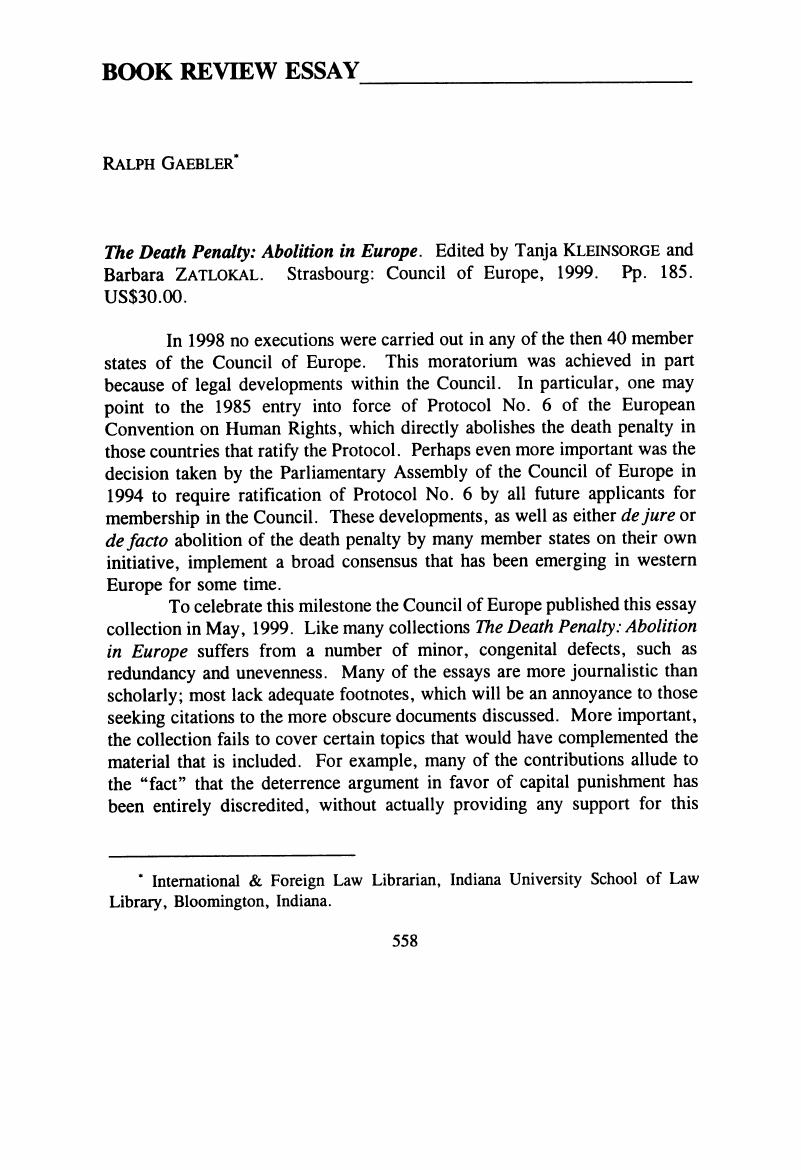No CrossRef data available.
Published online by Cambridge University Press: 28 February 2019

1 Several authors do make anecdotal references. For example, Renate Wohlwend notes that the homicide rate in Canada fell after abolition of the death penalty in 1976, while the rate rose in the United States after resumption of capital punishment in 1977 (p. 58). However, without placing these figures in the context of a more comprehensive and systematic study, Wohlwend fails to persuade. Based on the facts she presents, it is certainly possible that the homicide rate would have fallen in Canada even faster if the death penalty had not been abolished, and conversely, that it would have risen even faster in the United States without the resumption of capital punishment.Google Scholar
2 These include “The Efforts of the Parliamentary Assembly of the Council of Europe” by Renate Wohlwend; “Protocol No. 6 to the European Convention on Human Rights” by Hans Christian Krüger; “The Death Penalty and the Case-law of the Institutions of the European Convention on Human Rights” by Ravaud, Caroline and Trechsel, Stefan; and “The United Nations and the Abolition of the Death Penalty” by Roberto Toscano.Google Scholar
3 These include “The Abolition of the Death Penalty in France” by Forst, Michel; “The Death Penalty in Slovakia” by Robert Fico; “A Vast Place of Execution: The Death Penalty in Russia” by Anatoly Pristavkin; and “Abolishing the Death Penalty in Ukraine: Difficulties Real or Imagined?” by Serhiy Holovatiy.Google Scholar
4 These include “The Death Penalty Versus Human Rights” by Prokosch, Eric; “The Death Penalty and the ‘Fairy Ring’” by Philippe Toussaint; “Victims of Crime and the Death Penalty by Hodgkinson, Peter; as well as the introduction by Hood, Roger, and the conclusion by Sergei Kovalev.Google Scholar
5 This misunderstanding is most clearly revealed in Peter Hodgkinson's statement about the relationship between the retribution principle and the mode of execution used. He states: “The mode of execution debate goes to the heart of the modern purpose of the death penalty – retribution. The move towards the more sanitised and clinical lethal injection represents an interesting dilemma; on the one hand it is an attempt to make the execution process more civilised and therefore more acceptable, whilst on the other it represents a dilution of the retributive justification.” In other words, retribution is equated with the infliction of pain. But the retribution principle is completely indifferent to the level of pain; in fact, there is no inconsistency between seeking retribution to redeem society's moral outrage, while at the same time being concerned to do so in a manner that is as painless as possible.Google Scholar